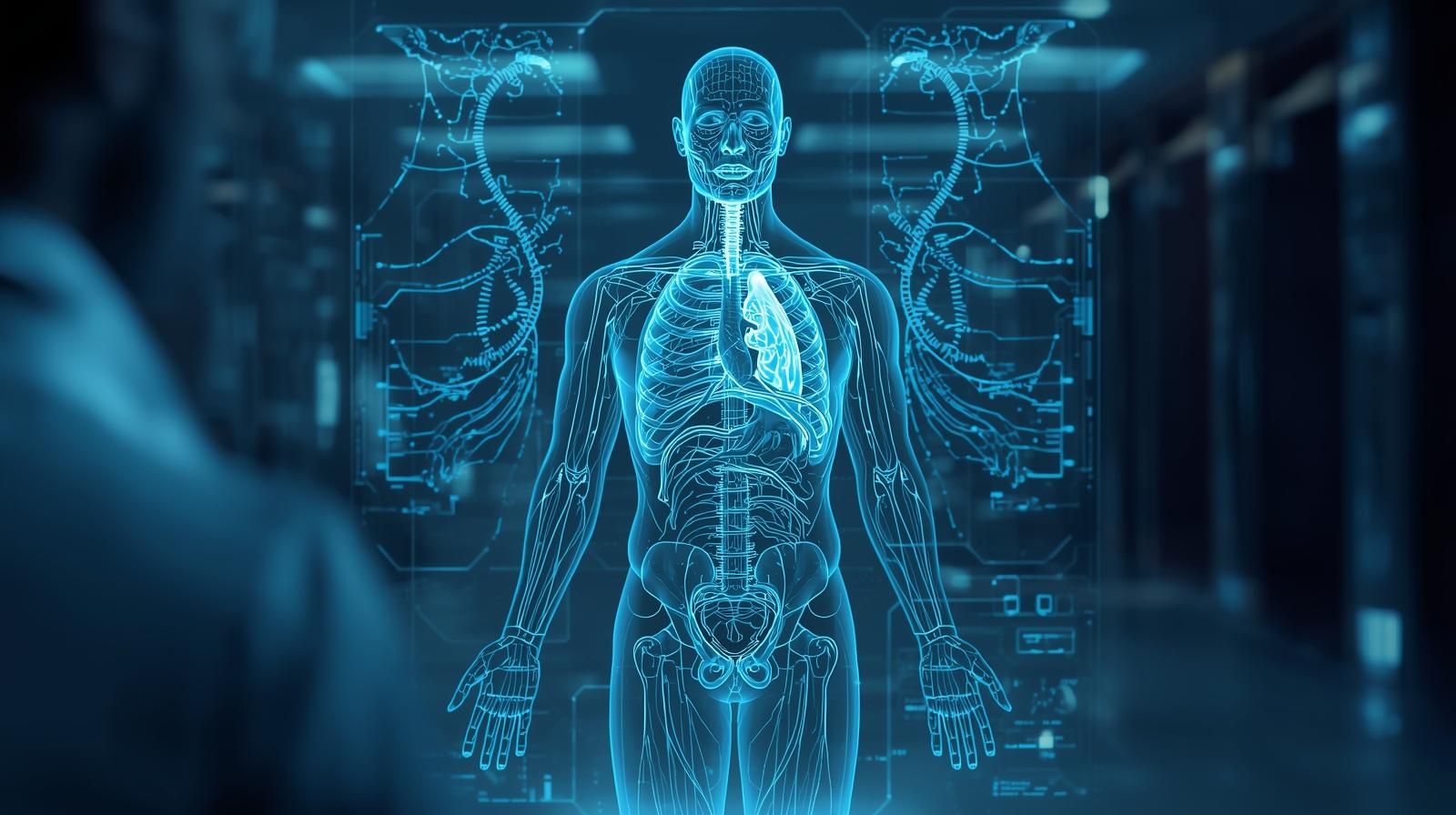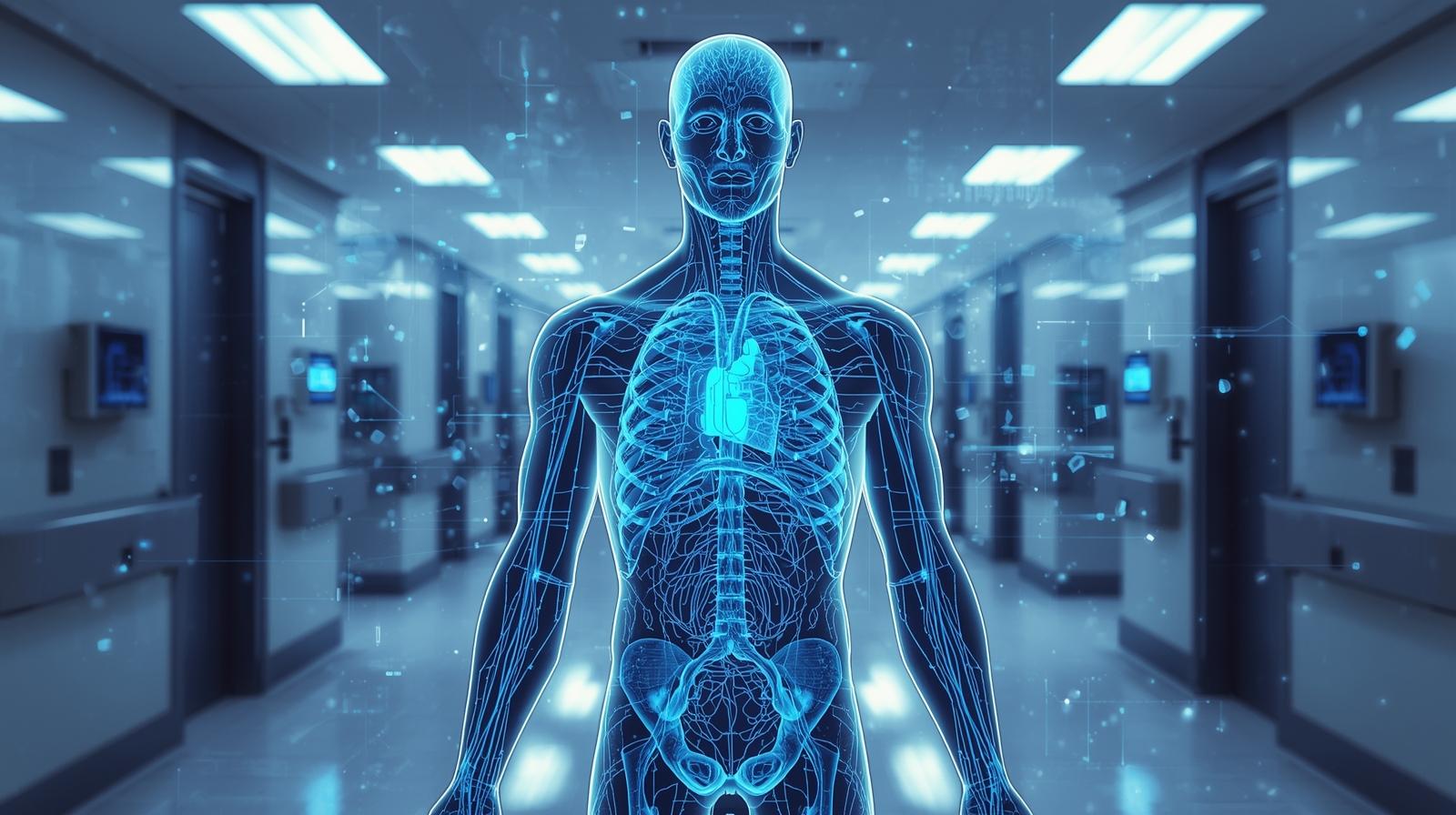The global Digital Twin in Healthcare Market is experiencing rapid expansion. This growth is fueled by advancements in artificial intelligence and data analytics. The increasing adoption of Internet of Things devices in medicine also contributes. Healthcare providers seek innovative solutions to improve patient outcomes and reduce costs. Digital twins offer a powerful tool to achieve these critical goals. This market represents a convergence of the physical and digital worlds of medicine. It promises to create a more efficient, predictive, and personalized healthcare ecosystem for all.
The global Digital Twin Market was valued at USD 14.46 billion in 2024 and is projected to grow from USD 21.14 billion in 2025 to USD 149.81 billion by 2030, at a CAGR of 47.9% during the forecast period.

Defining the Digital Twin in Medicine
A healthcare digital twin is not a simple computer model. It is a living, breathing digital simulation that evolves with its physical twin. It integrates data from various sources such as medical imaging, genomics, and wearable sensors. This continuous data flow keeps the virtual model updated and accurate. The core purpose is to understand, predict, and optimize the health of the patient or system. It serves as a safe testing ground for different treatment strategies. Doctors can simulate how a patient might respond to a specific drug or procedure.
This virtual doppelgänger enables a deeply personalized approach to medicine. Traditional medicine often relies on population level data and averages. Digital twins allow for interventions tailored to the unique biology of an individual. This is the cornerstone of precision medicine. The model can forecast the progression of a disease like cancer or diabetes. It can predict potential complications before they become critical. This capability moves healthcare from a one size fits all model to a truly patient centric framework.
Key Drivers of Market Growth
Several powerful factors are propelling the Digital Twin in Healthcare Market forward. The rising prevalence of chronic diseases worldwide is a primary driver. Conditions like cardiovascular diseases and diabetes require continuous monitoring. Digital twins provide an ideal platform for managing these long term illnesses. The growing demand for personalized medicine is another significant factor. Patients and providers alike are seeking treatments designed for individual genetic makeup and lifestyle.
Technological advancements are the backbone of this market’s expansion.
-
The proliferation of IoT devices and sensors generates the necessary real time data.
-
Advances in artificial intelligence and machine learning enable the complex analysis of this data.
Furthermore, the need to reduce skyrocketing healthcare costs pushes adoption. Digital twins can optimize hospital workflows and improve operational efficiency. They also help in preventing costly medical errors through better planning. Supportive government initiatives for digital health technologies also encourage market growth.
Diverse Applications Across Healthcare
The applications of digital twins in healthcare are vast and varied. They span from the molecular level to the entire hospital system. In pharmaceuticals, digital twins of organs can revolutionize drug discovery. They can simulate how a new drug compound interacts with human biology. This can significantly reduce the time and cost of clinical trials. It can also help in identifying potential side effects much earlier in the development process.
For medical devices, digital twins are used to create virtual prototypes. Engineers can test and refine devices like pacemakers in a simulated environment. This leads to safer and more effective products reaching the market. On a larger scale, hospital administrators can create digital twins of entire facilities. These models can simulate patient flow, staff allocation, and equipment usage. This helps in optimizing resources and improving the overall patient experience within the hospital.
Revolutionizing Patient Specific Surgical Planning
One of the most immediate applications is in complex surgical procedures. Surgeons can create a precise digital twin of a patient’s organ. This could be a heart, a brain, or a knee joint. Using this model, surgeons can practice the entire operation virtually before making a single incision. They can anticipate challenges and identify the optimal surgical approach. This rehearsal leads to increased precision and significantly reduced operation times.
The benefits extend to the patient as well. A shorter surgery often means less time under anesthesia. It also typically results in reduced blood loss and a lower risk of infection. Furthermore, surgeons can test different prosthetic devices within the digital twin. They can select the one that offers the best fit and functional outcome for that specific patient. This level of pre operative planning was unimaginable a few years ago. It dramatically improves surgical success rates and patient recovery.
Powering Personalized Medicine and Treatment
Personalized medicine is the ultimate goal of modern healthcare. Digital twins are a key enabler of this vision. By creating a virtual copy of a patient, doctors can move beyond generic treatment protocols. They can simulate how a specific patient will respond to a chemotherapy regimen. They can predict the effectiveness of a particular antihypertensive drug. This allows for the customization of therapy plans with a high degree of confidence.
This approach minimizes the trial and error method often seen in chronic disease management. For a cancer patient, it means avoiding the physical and emotional toll of ineffective treatments. For a diabetic patient, it means fine tuning insulin doses based on predictive alerts from their digital twin. The model can integrate data from continuous glucose monitors and lifestyle factors. It can then provide personalized recommendations to maintain optimal blood sugar levels.
Enhancing Medical Device Innovation
The medical device industry is a major beneficiary of digital twin technology. Companies are using it to accelerate innovation and ensure regulatory compliance. They can create a digital twin of a new device, such as an insulin pump or a stent. This virtual model can be subjected to countless simulated tests under various conditions. Engineers can analyze performance, durability, and potential failure points without physical prototypes.
This digital simulation process drastically reduces research and development costs. It also shortens the product development lifecycle. This allows new and improved devices to reach patients faster. Furthermore, digital twins can be used for predictive maintenance of medical equipment within hospitals. The virtual model can monitor the real device’s performance and predict when a component might fail. This enables proactive maintenance, preventing device downtime during critical procedures.
Operational Efficiency in Hospital Management
Hospitals are complex ecosystems with numerous moving parts. A digital twin of a hospital can model and simulate its entire operations. This includes patient admission processes, emergency room workflows, and surgical suite scheduling. Administrators can use this model to identify bottlenecks and inefficiencies. They can test different staffing models or layout changes in the virtual world before implementation.
This leads to a more streamlined and cost effective healthcare delivery system. For instance, the digital twin can predict patient admission rates. This allows for better staff scheduling and inventory management of medical supplies. It can also optimize the routing of patients and equipment within the hospital. The result is reduced waiting times for patients and a less stressful environment for healthcare workers. This operational excellence directly translates into improved patient care and satisfaction.
Addressing Market Challenges and Restraints
Despite its immense potential, the Digital Twin in Healthcare Market faces several challenges. Data security and patient privacy are the most significant concerns. Digital twins require the aggregation of vast amounts of sensitive personal health information. Protecting this data from cyber threats is absolutely paramount. A single breach could have devastating consequences for patient trust and safety. Robust cybersecurity frameworks are essential for widespread adoption.
The high cost of implementation is another major barrier. Developing and maintaining accurate digital twins requires significant investment in technology and expertise. This includes advanced software, high performance computing infrastructure, and skilled data scientists. For many smaller hospitals and clinics, this cost may be prohibitive initially. There is also a lack of standardized protocols for creating and using digital twins. This interoperability issue can hinder the seamless exchange of data between different systems and providers.
Download PDF Brochure @ https://www.marketsandmarkets.com/pdfdownloadNew.asp?id=225269522
The Future Outlook of the Market
The future of the Digital Twin in Healthcare Market is exceptionally bright. The market is expected to continue its robust growth trajectory in the coming decade. We will see a move from single organ twins to comprehensive whole body models. These holistic avatars will provide a complete view of a patient’s health. The integration with emerging technologies like augmented reality will provide new interfaces for doctors to interact with these models.
The concept of a national or global digital twin population is also emerging. This would allow for large scale epidemiological studies and public health planning. Researchers could simulate the spread of infectious diseases or the impact of health policies. As technology costs decrease and AI capabilities improve, digital twins will become more accessible. They will evolve from a tool for complex cases to a standard part of routine healthcare. This will fundamentally change how we understand, manage, and improve human health.

Key Takeaways
The Digital Twin in Healthcare Market is at the forefront of a medical revolution. This technology offers a paradigm shift from reactive care to proactive and personalized health management. It empowers clinicians with powerful predictive tools and surgical simulators. It provides patients with treatments tailored to their unique biological makeup. The market is driven by technological advancement and the pressing need for efficient healthcare solutions.
While challenges related to data security and cost remain, the benefits are too significant to ignore. As the technology matures and becomes more standardized, its adoption will become widespread. Digital twins will eventually become an integral part of the healthcare landscape. They will enable a future where medicine is predictive, participatory, and personalized. The journey has just begun, and the potential to save lives and improve outcomes is truly immense.
Explore In-Depth Semiconductor & Electronics Market Research:
https://www.marketsandmarkets.com/semiconductorand-electonics-market-research-87.html
Frequently Asked Questions
What is a digital twin in healthcare?
A digital twin in healthcare is a dynamic virtual model of a physical entity, such as a patient’s organ, a physiological process, or an entire hospital. It uses real time data to simulate, predict, and optimize health outcomes and operational efficiency.
How does a digital twin differ from a simple computer model?
Unlike a static computer model, a digital twin is continuously updated with live data from its physical counterpart. It learns and evolves over time, providing a real time, interactive representation rather than a fixed simulation.
What are the primary applications of digital twins in healthcare?
Key applications include personalized treatment planning, surgical simulation and rehearsal, drug discovery and development, medical device testing, and optimizing hospital operations and patient flow management.
What are the major challenges facing the Digital Twin in Healthcare Market?
Significant challenges include ensuring robust data privacy and security, the high initial cost of implementation and integration, the need for large and diverse datasets, and a lack of universal standards and regulatory frameworks.
How will digital twins impact the future of personalized medicine?
Digital twins will enable truly personalized medicine by allowing doctors to test treatments on a virtual copy of the patient first. This minimizes trial and error, predicts individual responses to therapy, and tailors interventions to a person’s unique genetics and lifestyle.
Is patient data safe with digital twin technology?
Data security is a top priority and a significant challenge. Implementing digital twins requires state of the art encryption, strict access controls, and compliance with regulations like HIPAA to ensure patient data is protected from unauthorized access and breaches.
See The Latest Semiconductor Reports:
Proximity Sensor Market Size, Share & Trends : https://www.marketsandmarkets.com/Market-Reports/proximity-sensor-market-36281914.html
Terahertz Technology Market Size, Share & Trends : https://www.marketsandmarkets.com/Market-Reports/terahertz-technology-market-71182197.html
Actuators Market Size, Share & Trends : https://www.marketsandmarkets.com/Market-Reports/global-actuators-market-59465451.html
Time-Sensitive Networking Market Size, Share & Trends : https://www.marketsandmarkets.com/Market-Reports/time-sensitive-networking-market-215000493.html
Battery Technology Market Size, Share & Trends : https://www.marketsandmarkets.com/Market-Reports/battery-technology-market-253343109.html
Smart Appliances Market : https://www.marketsandmarkets.com/Market-Reports/smart-appliances-market-8228252.html
